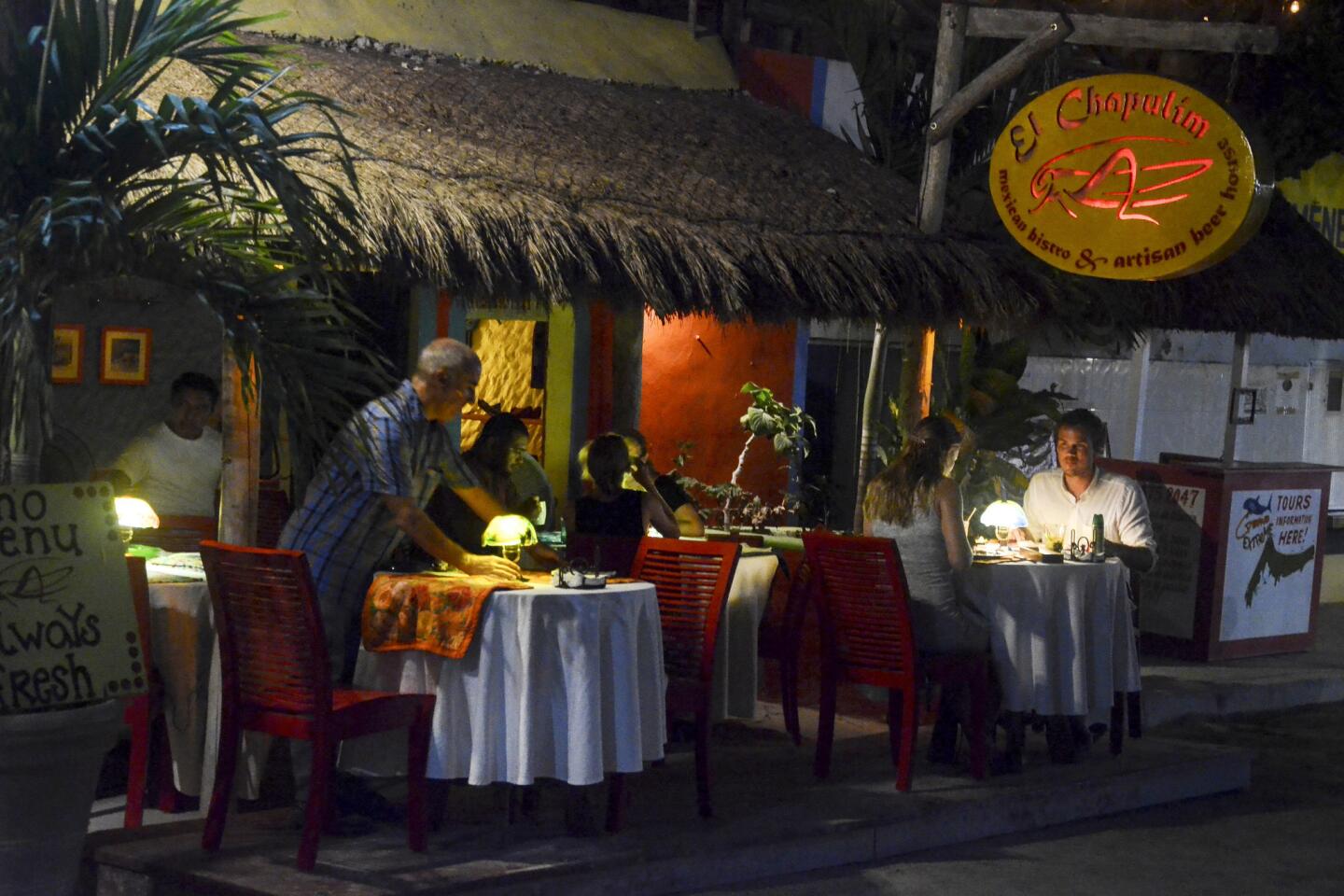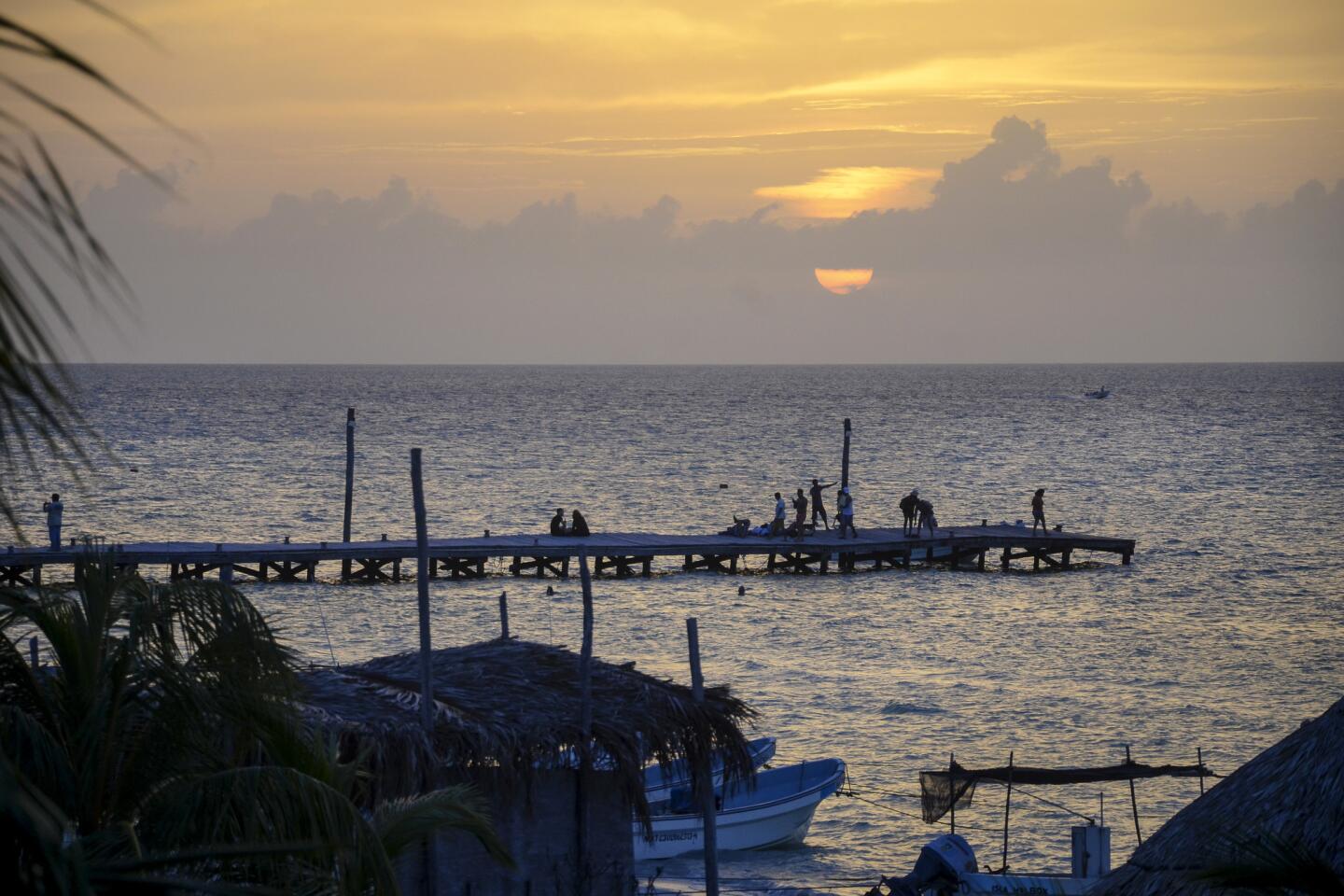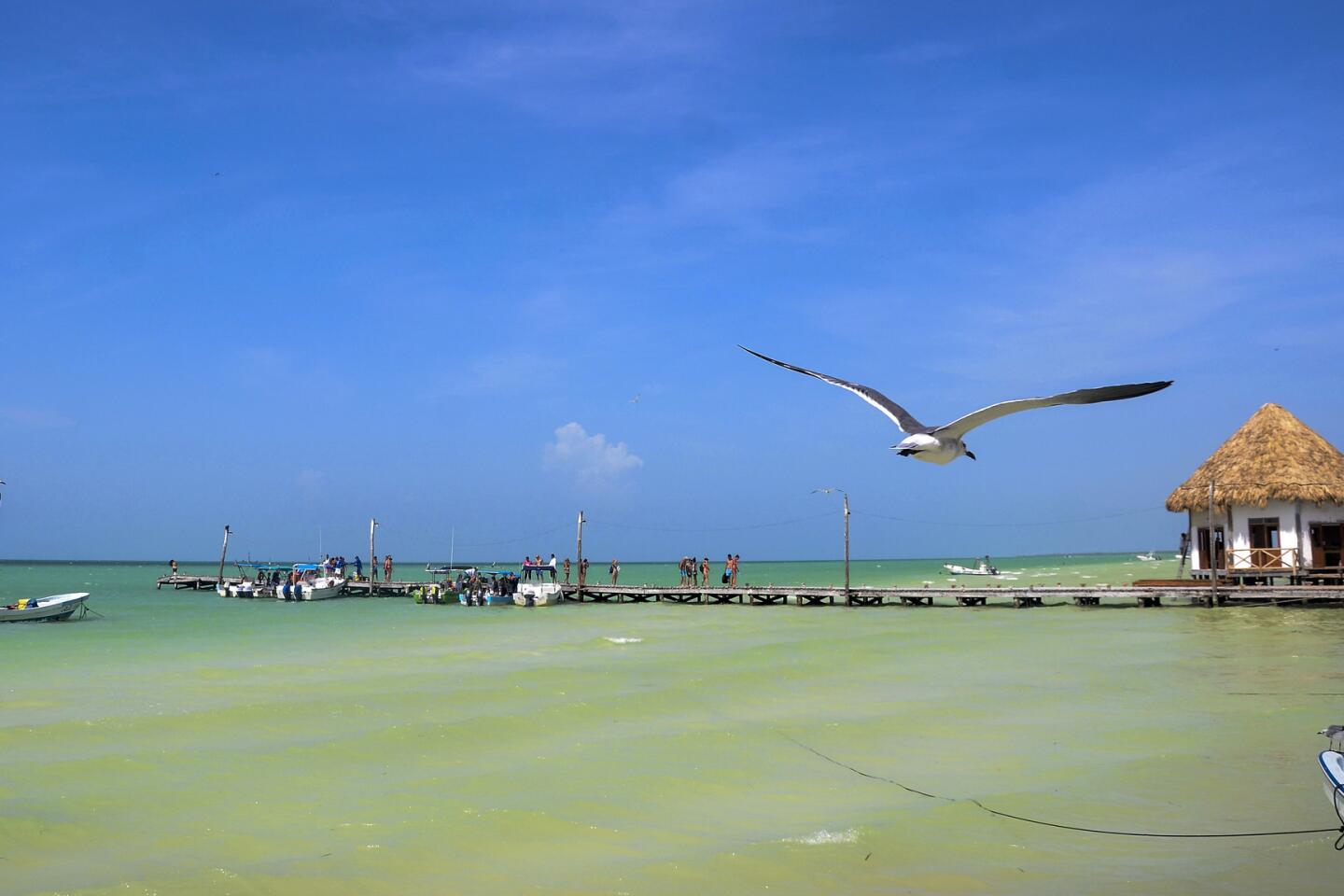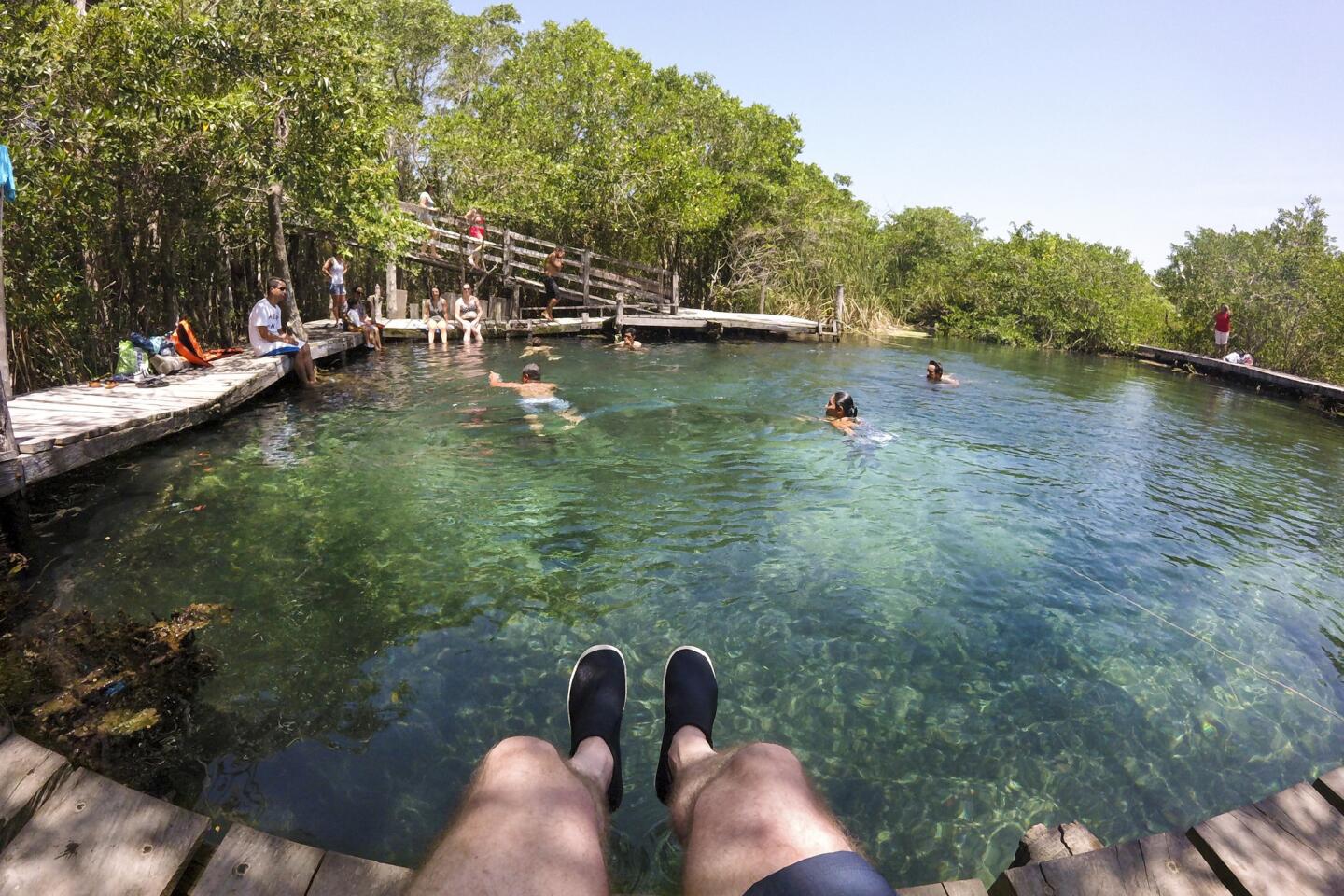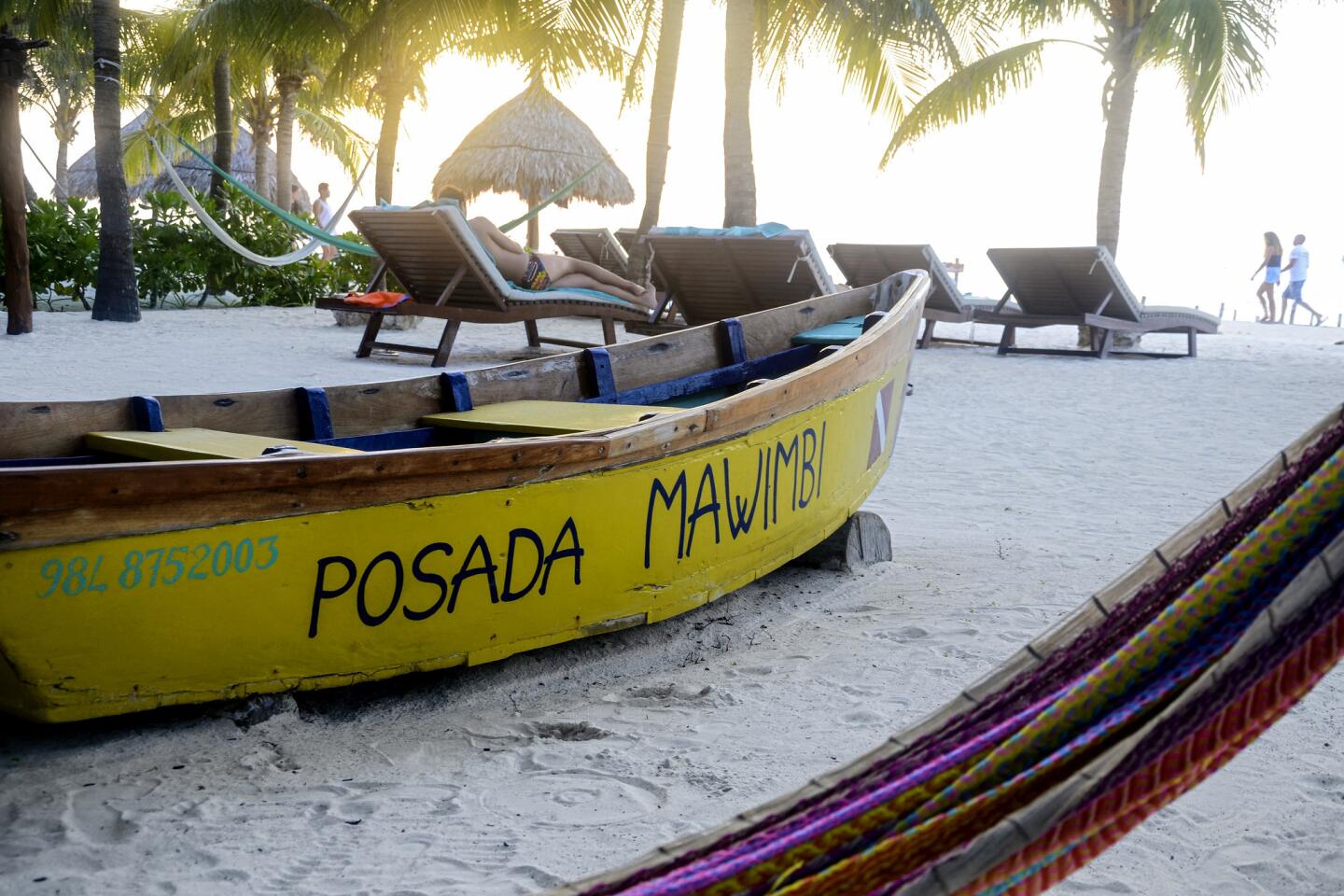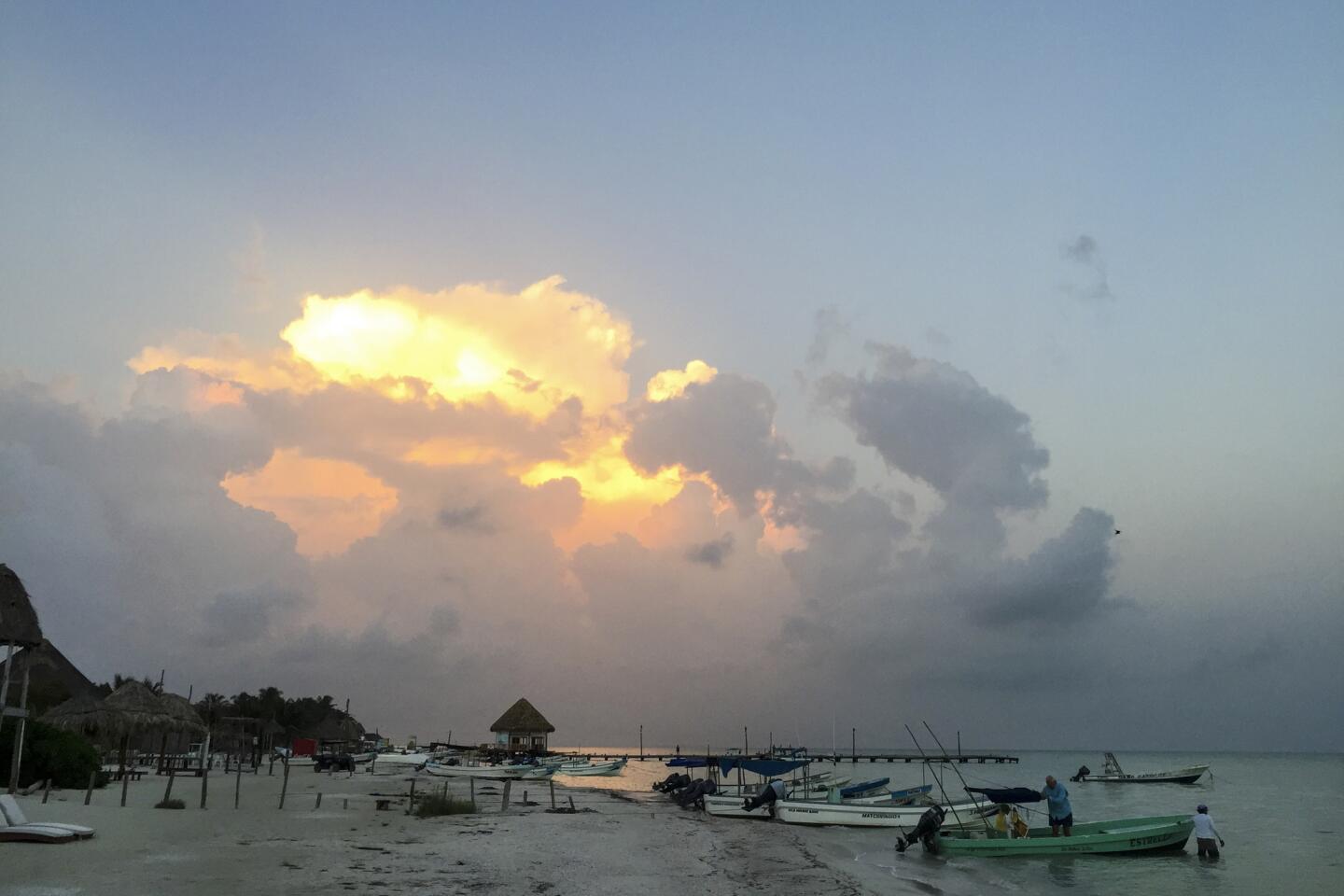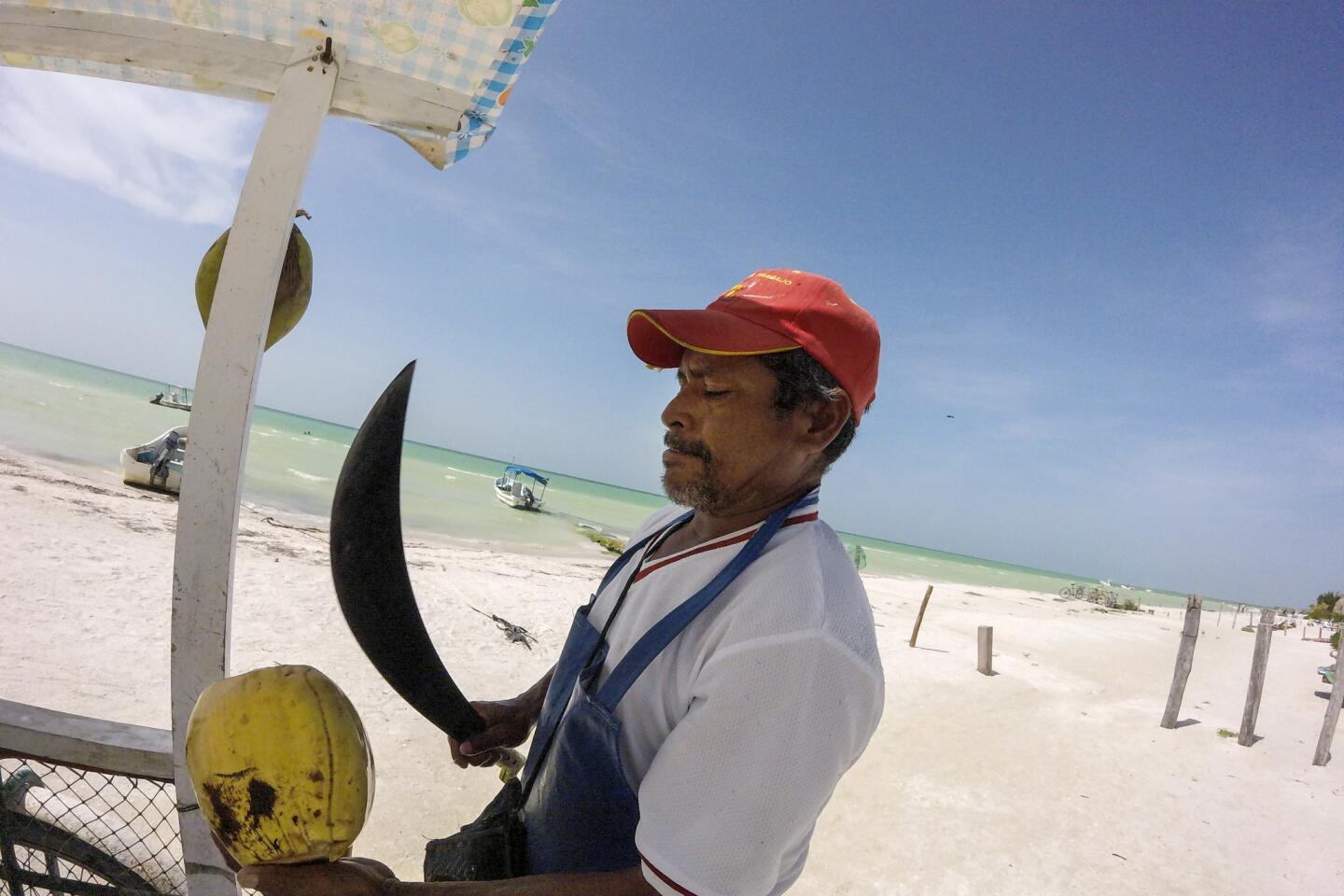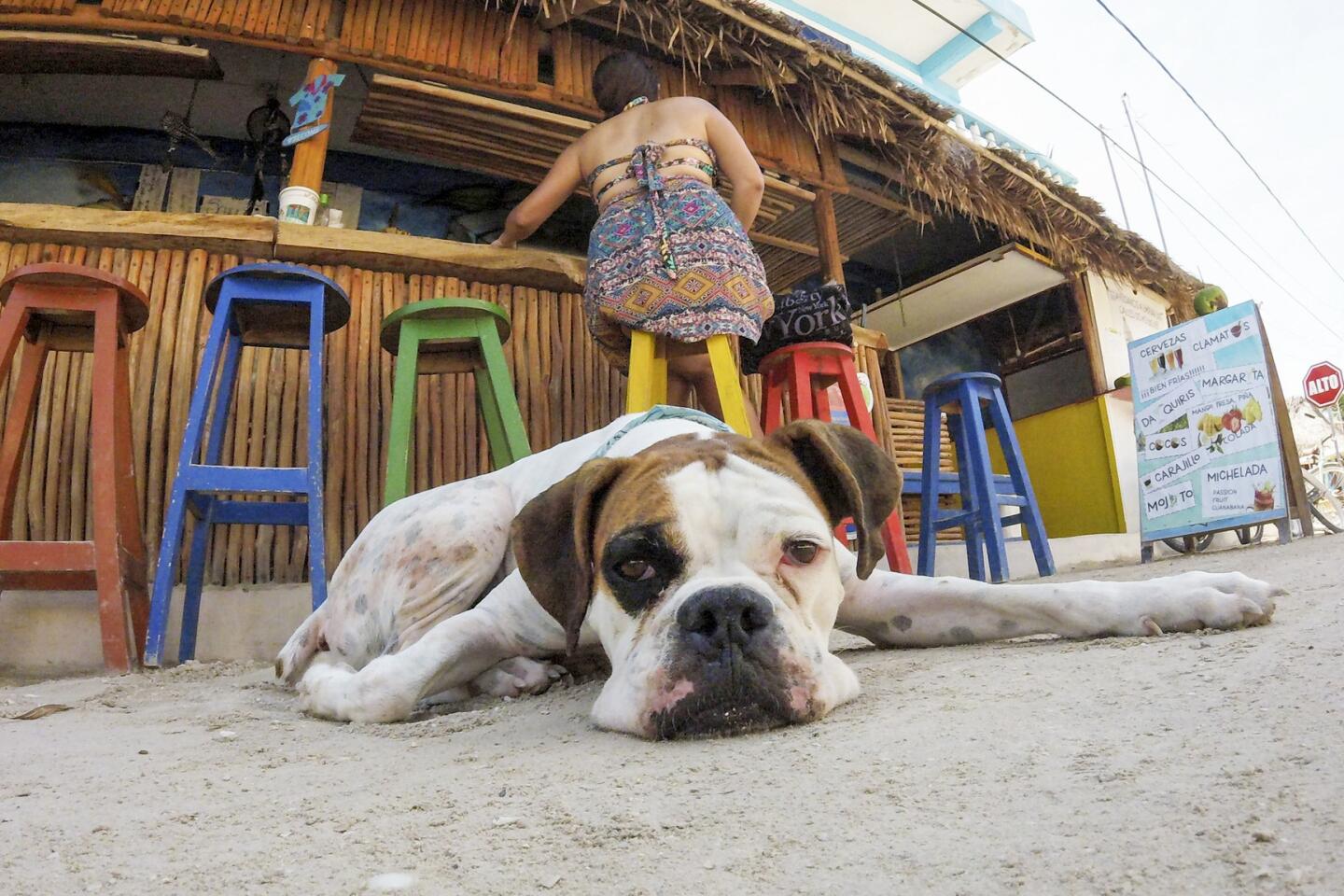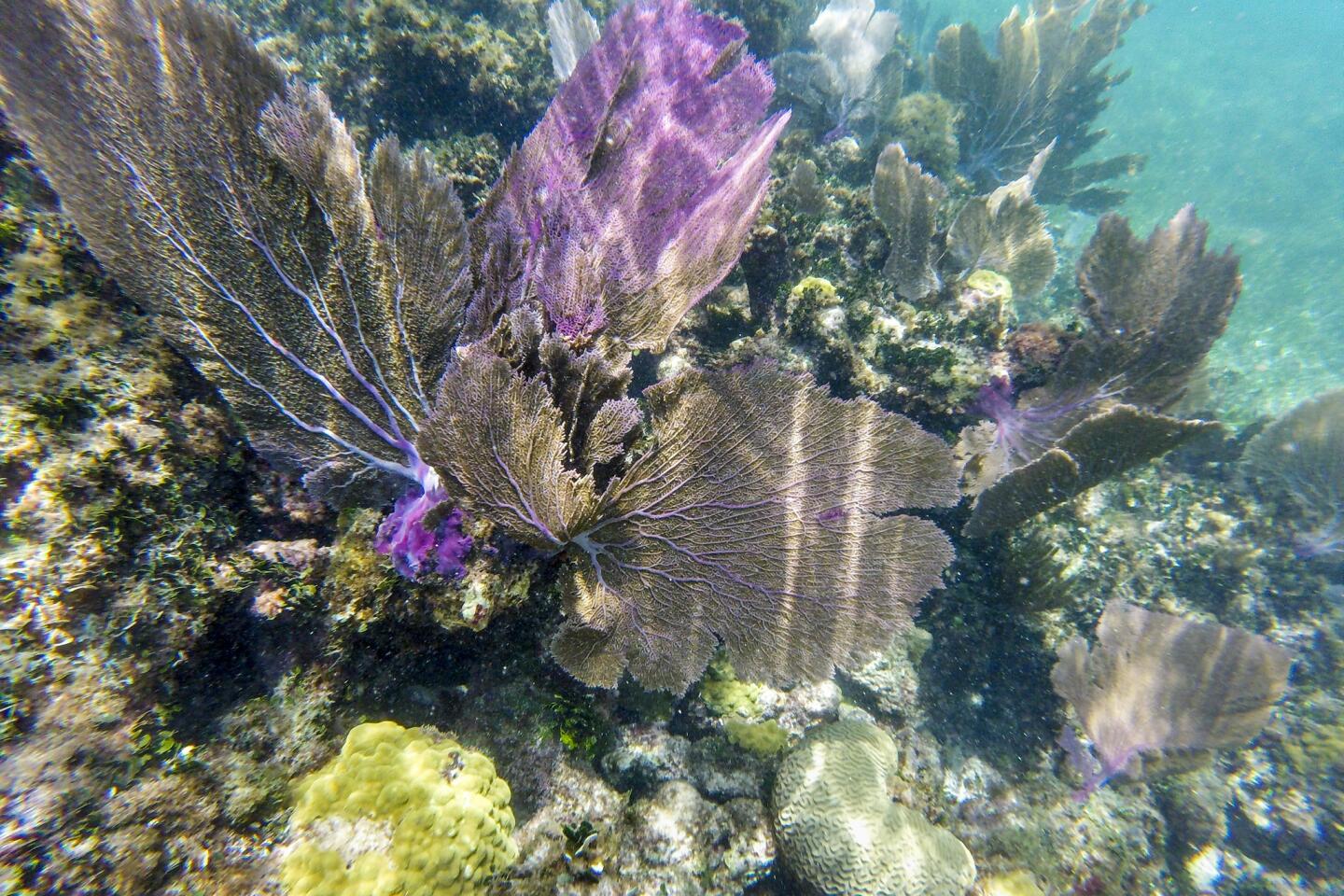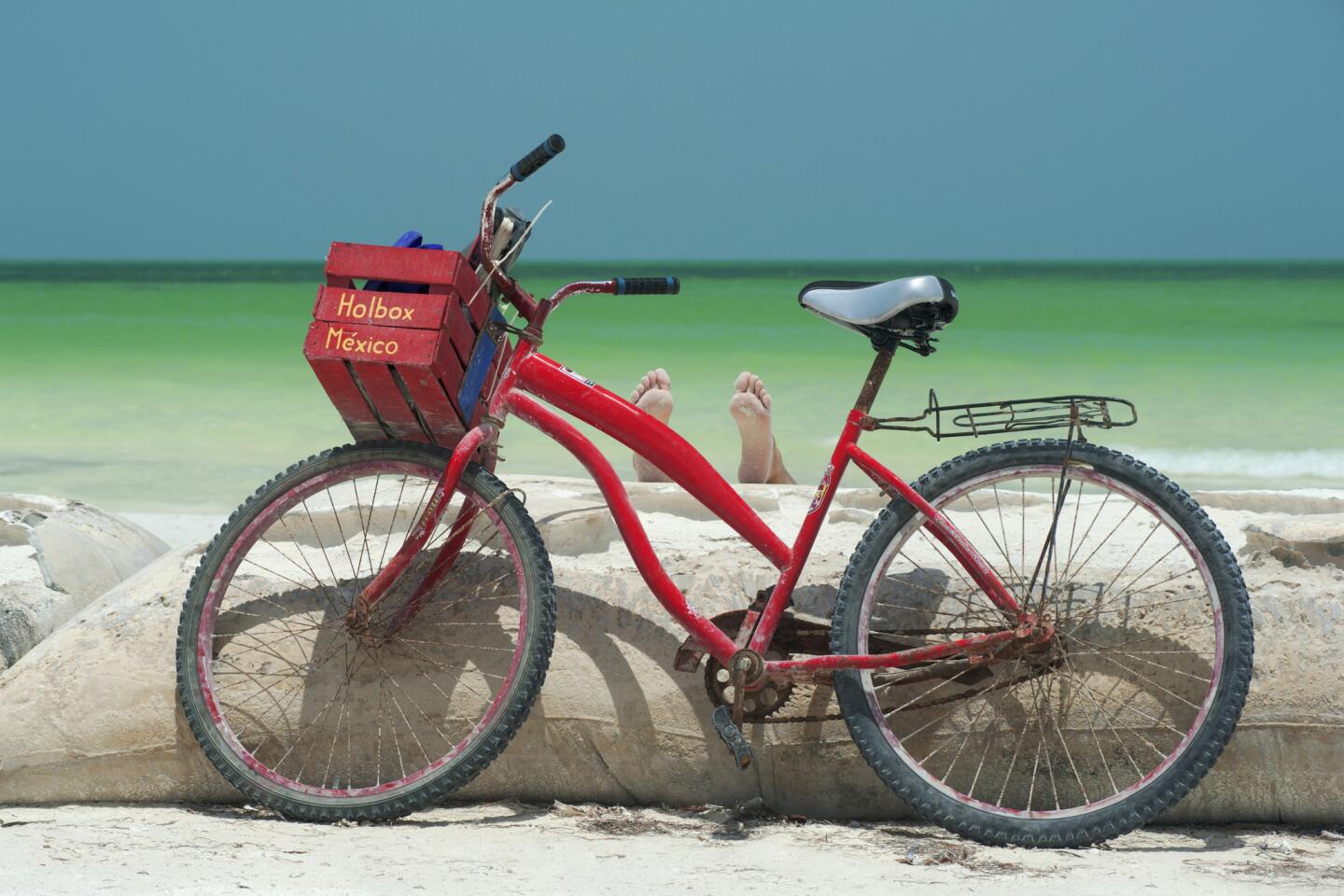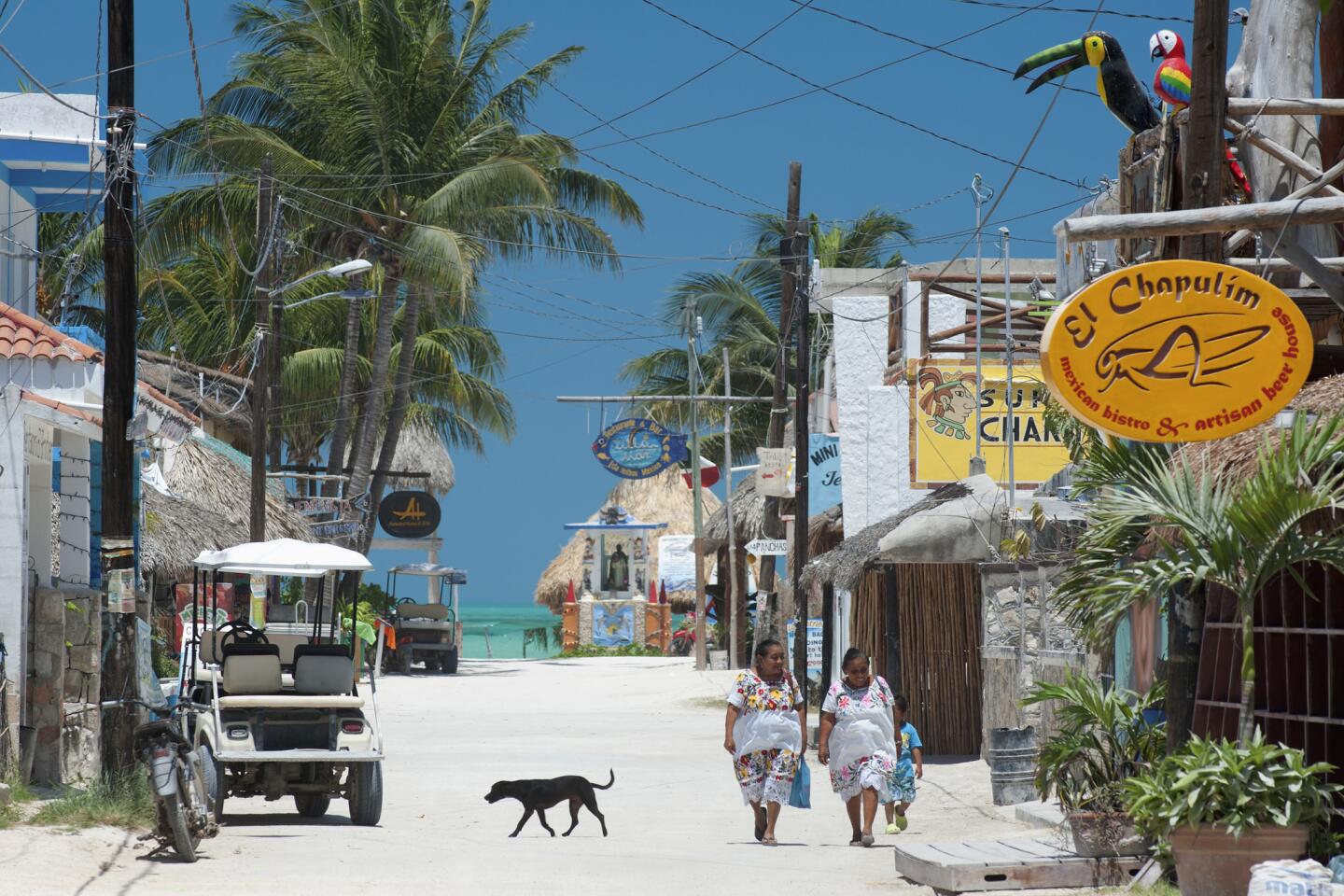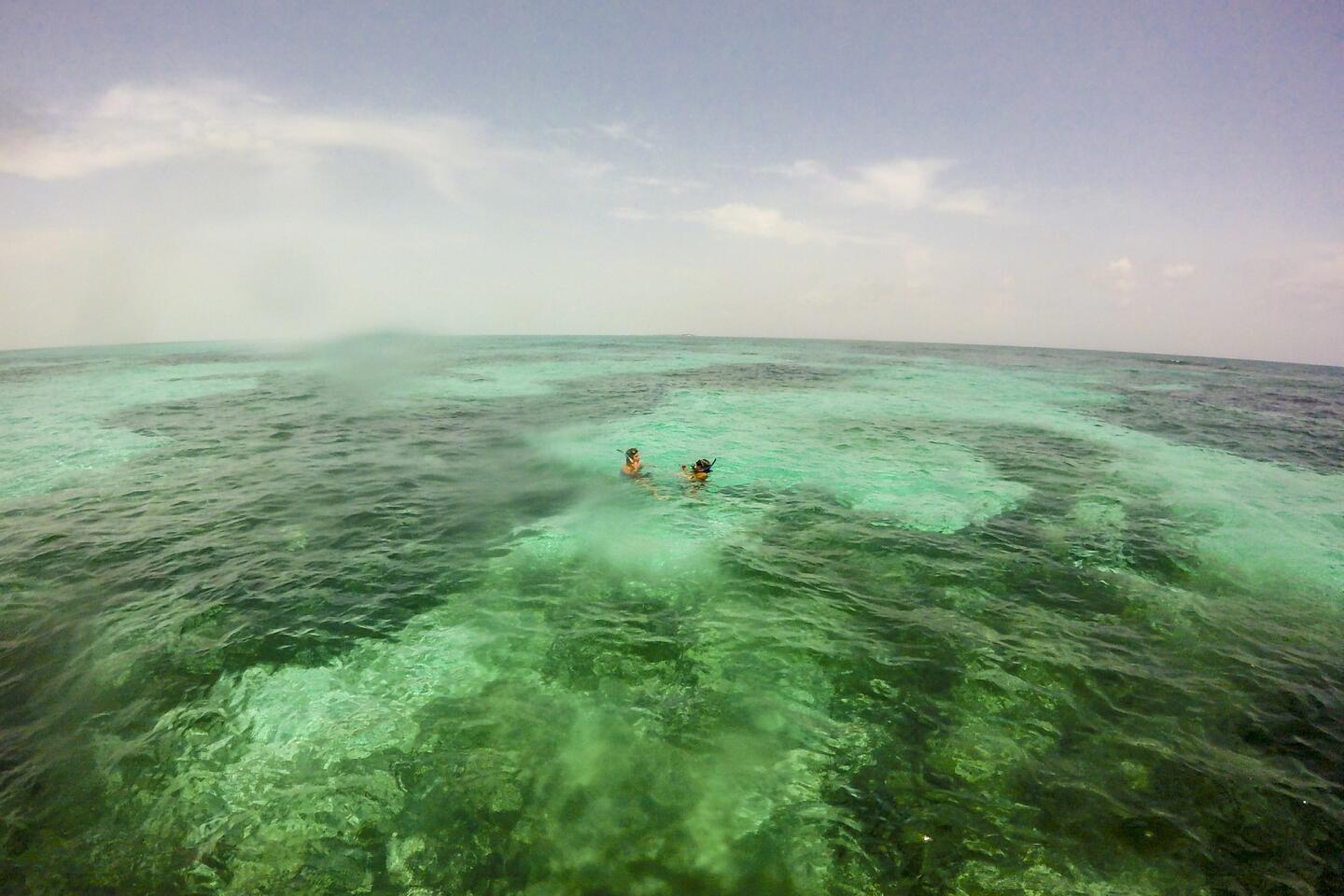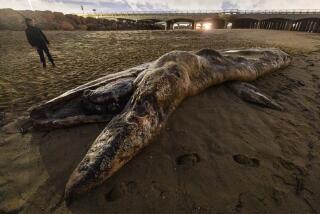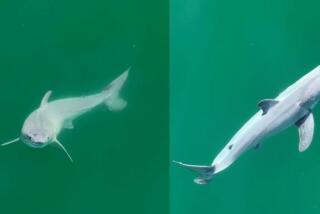From the mellow, little Mexican island of Holbox, travelers head out to swim with the world’s largest fish

Isla Holbox is a flat, sandy, increasingly popular island off Mexico’s Yucatan Peninsula. Why is business booming? Because and a great place to see whale sharks.
Several weeks before I found myself uncomfortably close to the world’s largest shark, I told a few folks I would be going to Holbox.
“Whole what?” asked more than one.
“Holocene,” corrected my smartphone.
“Ohl-bosch,” corrected the locals when I arrived.
Isla Holbox, a Mexican island with turquoise waters, unpaved streets and about 3,000 residents, lies about 120 miles northwest of Cancún, 500 miles south of New Orleans.
It’s not an American household name yet, but it has fine sand, palm trees, wild flamingos and beachfront hotels charging less than $200 a night.
Moreover, if you take a boat out from mid-May through mid-September, you have a good chance of swimming with a whale shark. There is no bigger fish.
They grow to as much as 40 feet long and 30,000 pounds. Their gray flanks are peppered with white polka dots. Their mouths are up to 3 feet tall and 4 feet wide. Because they’re filter-feeders, consuming mostly plankton, they swim through life with their wide mouths open, no teeth in sight.
But first, the island.
It’s about 26 miles long and a mile wide and is developed only at its eastern end. You’ll want mosquito repellent.
Most visitors arrive after a three-hour ride by taxi, van or bus from Cancún, then a half-hour ferry from the coastal town of Chiquilá.
The temperature is rarely cooler than 65 degrees, rarely hotter than 90.
Before long, somebody will explain that the word “Holbox” comes from a Mayan phrase for “black hole,” perhaps derived from local freshwater springs.
So far there are no global hotel or restaurant brands — in fact, no hotels with more than about 45 rooms. About a dozen beachfront lodgings are lined up along Holbox’s north-facing shore, where the dock is.
The bohemian-chic, Italian-owned Hotelito Casa las Tortugas, where I was lucky enough to land, is more stylish than most of the island’s lodgings. It has 26 rooms, a pool, a raked-sand beachfront and rates that start at about $186 a night.
Most islanders live in low-rise, no-frills homes constructed in the last 50 years on the flat, sandy island. Most of the buildings are boxy and modern, often splashed with murals.
There is nothing Spanish Colonial here.
Because the island is part of the Yum Balam Nature Reserve and a hefty distance from Cancún, growth has been limited. One major development proposal has been tied up in court for years.
Yet the place is getting busier as travelers rush in from the U.S., Europe and Mexico City. As tourism grows (and debate increases about what’s sustainable and what isn’t), a sophisticated crop of restaurants has arisen.
What to do before whale shark watching
Here are some of the things you do before heading out to find a whale shark:
- Prowl around downtown Holbox. This won’t take long. The built-up east end is about five by 12 blocks. Most cars are banned, and the streets are dominated by golf carts (you can rent one), scooters, bikes and pedestrians. So far there’s not much nightlife.
- Laze on the beach. The sand is fine. The waves are too gentle for surfing, but the winds lively enough to encourage kite boarders.
On nights when the moon is dim, locals say you can spot bioluminescent phytoplankton glowing blue and green in the shallows. I didn’t see that, but I did catch sunrise and sunset at the dock as pelicans swooped and idle fishing boats bobbed.
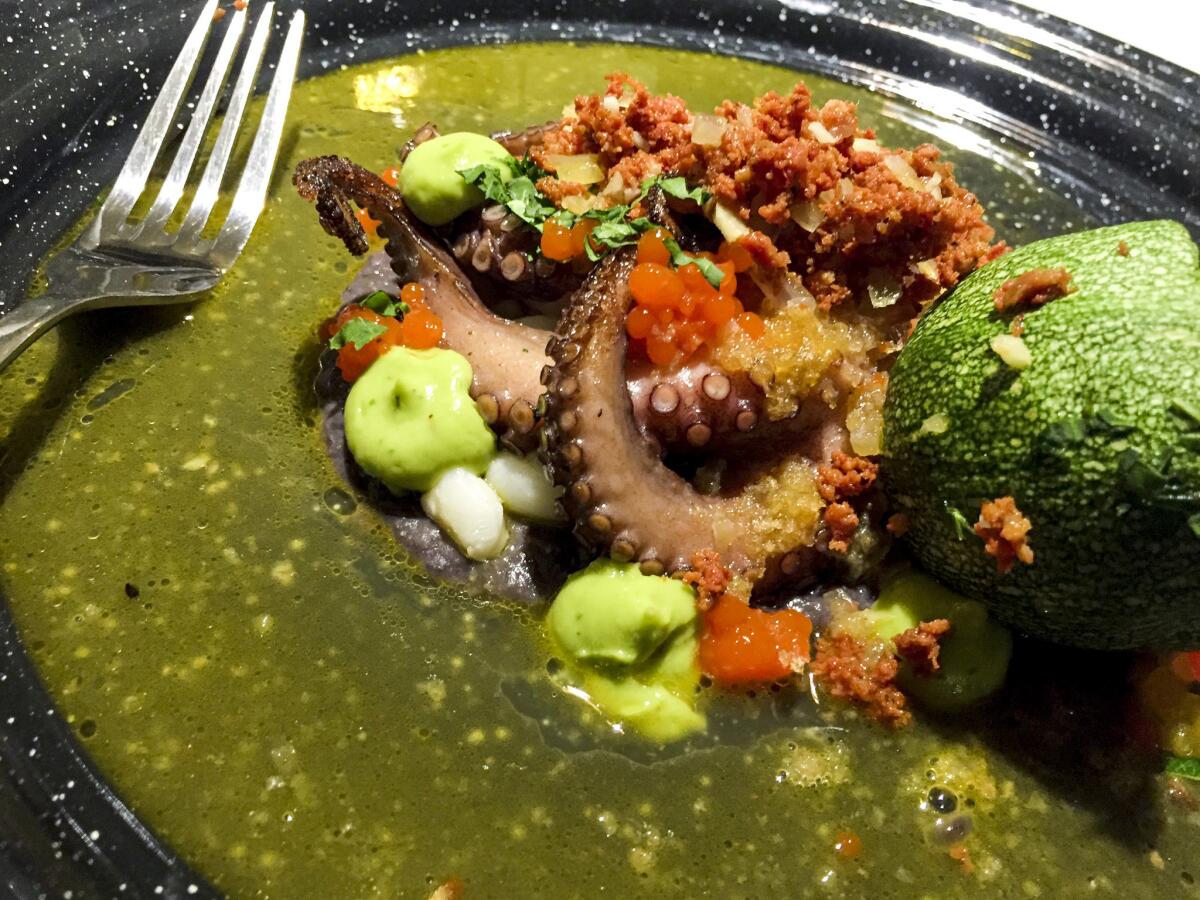
- Eat well. At El Chapulim, where there’s no menu, chef Erik Winckelmann typically cooks four main dishes each night and comes to your table to collect orders.
At Mandarina, the restaurant at Casa las Tortugas, your dinner might be duck in orange mole and brioche of huitlacoche (a.k.a. corn fungus).
At Milpa, a small, sophisticated dining room that opened in 2016, you might order the Drunken Octopus Roaming Valladolid, which is octopus soaked in beer sauce under a dome of swirling fumes, with bits of bacon and chorizo, corn and bell peppers.
This was my favorite meal of the visit. Until that night, I’d never before walked home on unpaved streets from a dinner of molecular cuisine.
- Look for feathers and scales. Some people get boat rides to the mangroves, where they paddle kayaks and often see crocodiles.
Many visitors sign up for a half-day island-hopping boat tour that includes Isla del Pájaros, where I spotted two flamingos, and Yalahau, a freshwater spring where you can swim and snack on ceviche while iguanas and a coatimundi (a close relative of the raccoon) skirmish for scraps.
On most Mondays, tour company V.I.P. Holbox Experience offers a free boat excursion for travelers who want to collect marine litter from the island’s remote northern beaches.
Never touch a whale shark
The company’s whale shark expedition costs about $125 per person. You borrow wet suits, mask and fins. A guide instructs you never to touch the creatures, which have been labeled “endangered” by the International Union for Conservation of Nature.
That’s in large part because of demand in Asia for the fins, meat and oil of the animals, which are supposed to be protected worldwide. But “harvesting” isn’t the only threat.
The World Wildlife Fund says that reckless tour-boat captains can interrupt sharks’ feeding or collide with them, and it works with whale tour operators to promote safe practices.
If your expedition is like mine, you’ll board a motorboat and ride about two hours to a cluster of whale sharks, which will likely be surrounded by a gaggle of boats bearing tourists from Holbox, Cancún and Isla Mujeres.
At some point in your day, there will be snorkeling and a sand bar to explore. But the sharks are the main event.
Once your captain gets the boat close to one of their telltale dorsal fins, your guide flops into the water. Guests follow, two at a time.
For most people the greatest astonishment comes the moment you duck your head beneath the surface. Beneath those dorsal fins, 10 to 15 tons of animal loom like the hidden bulk of an iceberg, but living and swimming at your side.
You might notice a harmless remora or two (they use a sucker on the top of their heads to attach themselves to larger fish) gliding along in the shark’s shadow.
But apart from swimming to keep up, you have nothing to do but gawk at this docile wonder and forget the wider world.
That’s what I did, anyway, until my guide gestured for me to swim back to the boat. I turned and started kicking my way through the open, blue water.
Your peripheral vision is limited in a mask. And I was swimming at an angle. And now something else was moving nearby….

Suddenly I was staring at a big, black oval directly in front of me. The mouth of another whale shark. Three feet tall, 4 feet wide, 5 feet away. It was like staring into the open end of a sleeping bag and finding deep space inside.
That waterproof camera in my right hand? Completely forgotten.
Fortunately the shark — which probably swam alongside a dozen scrawny, flailing mammals that day — showed no sign of caring. It made no sudden moves.
I made a bunch and barely succeeded in getting out of its way. Never touched it.
Then its flank passed before me, a blur of white dots, and I was alone again. The whole encounter took about three minutes.
The only thing left to do was find my boat, flop aboard and hope that these sharks and this island can thrive, or at least survive, amid the greater attention that’s bound to come.
THE BEST WAY TO ISLA HOLBOX, MEXICO
From LAX, Delta, Southwest, United and Virgin America offer nonstop service to Cancún, and American, United, Southwest and Aeromexico offer connecting service (change of planes). Restricted round-trip airfare from from $355, including taxes and fees.
From Cancún, travelers take a two- to three-hour drive to the town of Chiquilá. By public bus, one-way fares are about $15. By shuttle bus, fares are $40-$80 per person (for a couple) from V.I.P. Holbox and Holbox Shuttle. By taxis, fares are usually $100-$130 each way. The only way to reach Holbox from Chiquila is the Chiquila-Holbox ferry, about $5 each way for a 20-30-minute ride.
TELEPHONES
To call the numbers below from the U.S., dial 011 (the international dialing code), 52 (country code for Mexico), the area code and the local number.
WHAT TO DO
Several companies offer daylong whale-shark tours ($125-$135 per person) and half-day trips to Isla Pájaros, Isla Pasión and Yalahau Lagoon (about $30 per person). Among them: V.I.P. Holbox, and Holbox Adventure.
WHERE TO STAY
The island is small enough that these hotels don’t have street addresses.
Hotelito Casa de las Tortugas, (984) 875-2129. Twenty-six rooms. Doubles $186-$421, breakfast and taxes included. Three-night minimum with full payment in advance.
Posada Mawimbi, (984) 875-2003. Nine rooms, two bungalows. Doubles $158-$248, depending on season. Continental breakfast and taxes included.
La Chaya Eco Hotel, (984) 875-2142. Nine rooms, many with sea views. Doubles about $95, breakfast and taxes included.
WHERE TO EAT
El Chapulim, Avenida Tiburon Ballenas; (984) 137-6069. Mexican bistro and artisan beer house. Dinner entrees about $15.
Restaurante Milpa, Calle Palomino; (984) 875 2026. Modern Mexican. Dinner entrees about $10-$13
Mandarina Restaurant and Beach Club, Hotelito Casa las Tortugas, (984) 875-2129. Dinner entrees about $15-$25.
TO LEARN MORE
christopher.reynolds@latimes.com
Follow Reynolds on Twitter: @MrCSReynolds
More to Read
Sign up for The Wild
We’ll help you find the best places to hike, bike and run, as well as the perfect silent spots for meditation and yoga.
You may occasionally receive promotional content from the Los Angeles Times.


